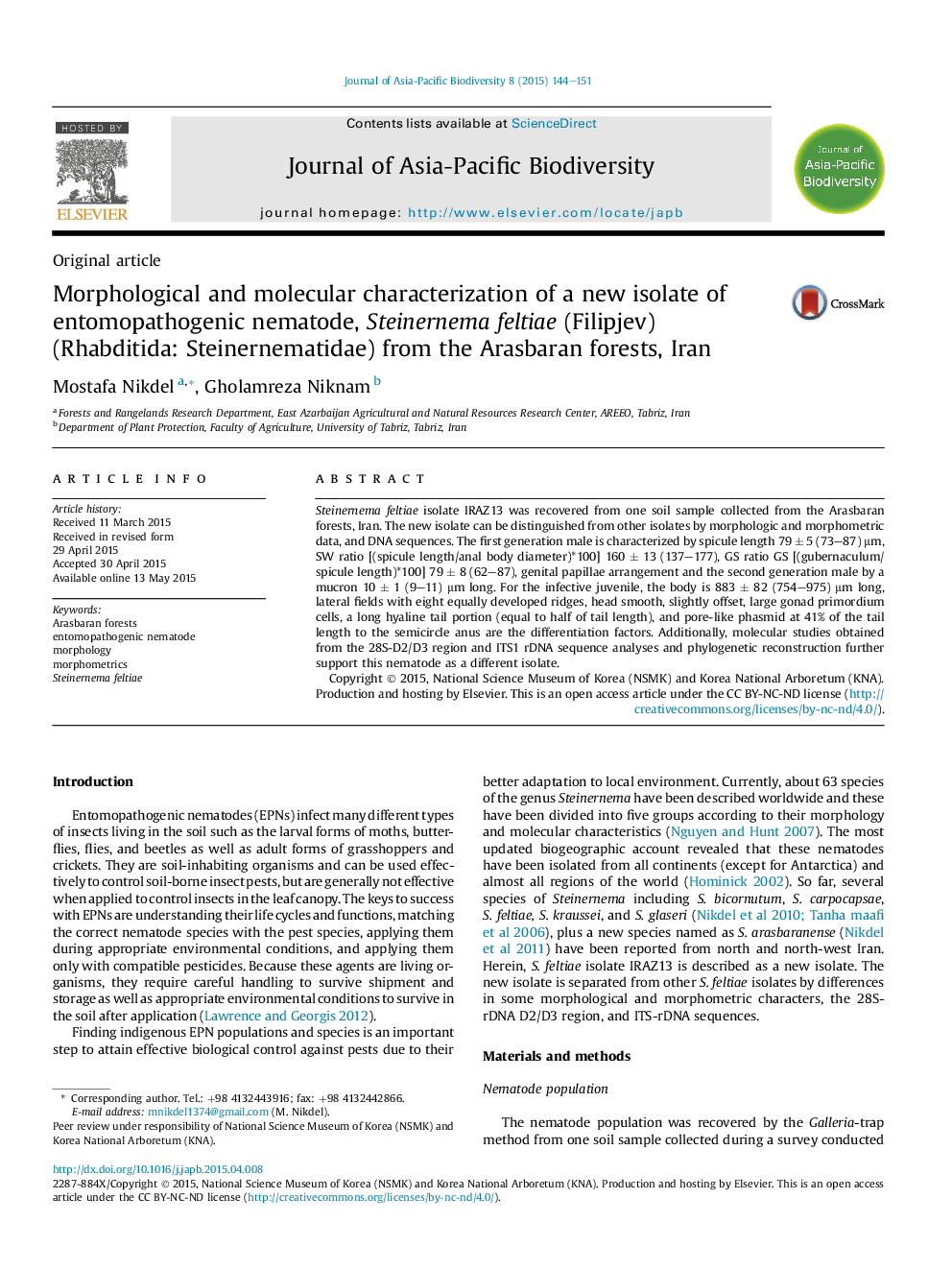| Article ID | Journal | Published Year | Pages | File Type |
|---|---|---|---|---|
| 4395090 | Journal of Asia-Pacific Biodiversity | 2015 | 8 Pages |
Steinernema feltiae isolate IRAZ13 was recovered from one soil sample collected from the Arasbaran forests, Iran. The new isolate can be distinguished from other isolates by morphologic and morphometric data, and DNA sequences. The first generation male is characterized by spicule length 79 ± 5 (73–87) μm, SW ratio [(spicule length/anal body diameter)*100] 160 ± 13 (137–177), GS ratio GS [(gubernaculum/spicule length)*100] 79 ± 8 (62–87), genital papillae arrangement and the second generation male by a mucron 10 ± 1 (9–11) μm long. For the infective juvenile, the body is 883 ± 82 (754–975) μm long, lateral fields with eight equally developed ridges, head smooth, slightly offset, large gonad primordium cells, a long hyaline tail portion (equal to half of tail length), and pore-like phasmid at 41% of the tail length to the semicircle anus are the differentiation factors. Additionally, molecular studies obtained from the 28S-D2/D3 region and ITS1 rDNA sequence analyses and phylogenetic reconstruction further support this nematode as a different isolate.
